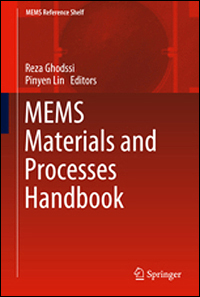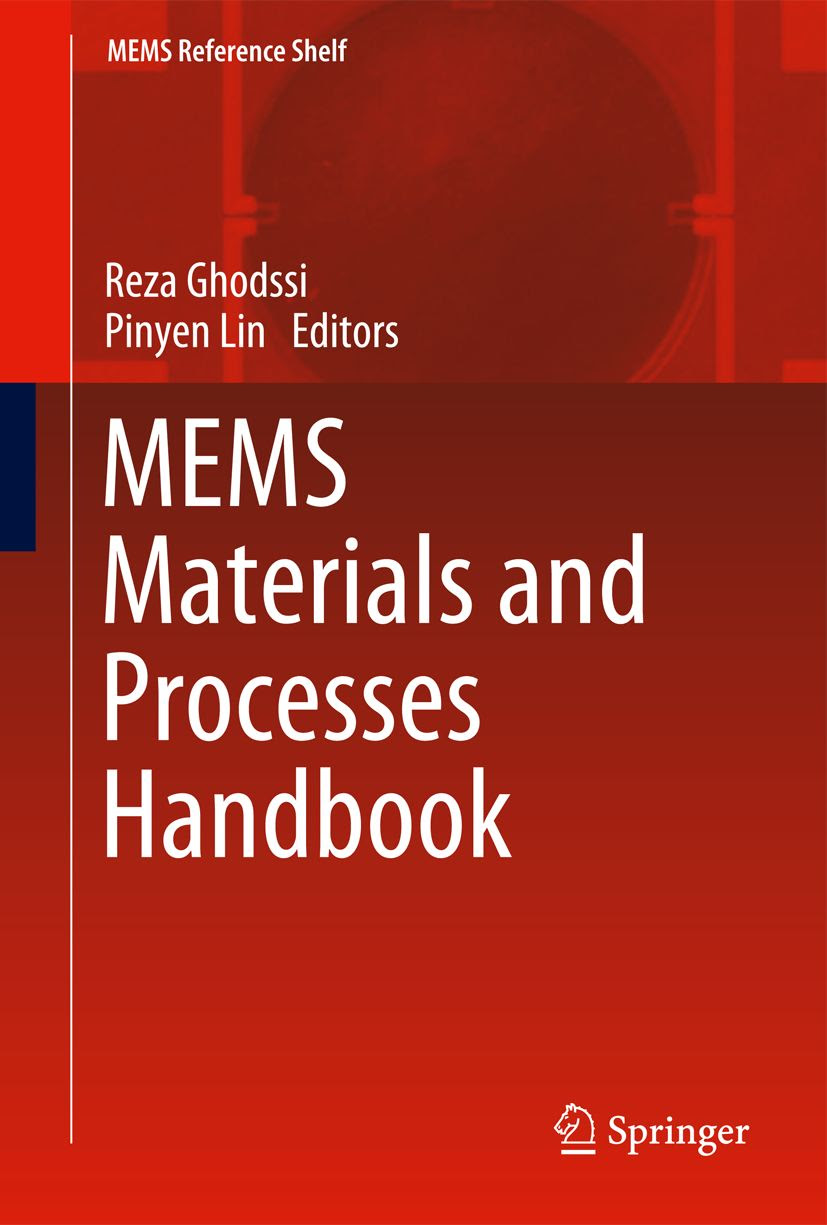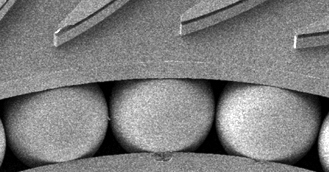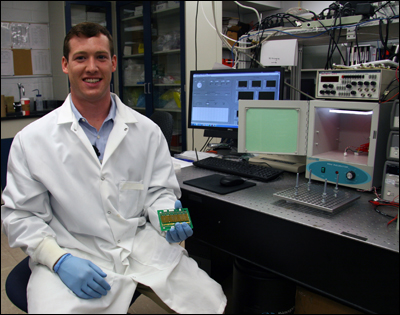News Story
New MEMS handbook is comprehensive, practical resource for academics, engineers, students

When we began to plan the Springer MEMS Reference Shelf back in 2005, our vision was to bring out individual monographs on the various application domains, each drawing on the contents of a central volume: the MEMS Materials and Processes Handbook. Here, the MEMS practitioner can find not just general descriptions of processes with a few typical numbers thrown in, but detailed process and material information in a data-rich, example-rich format. I am thrilled to see this volume now available to the public. It represents the effort of a huge cadre of MEMS experts, led by editors Reza Ghodssi and Pinyen Lin, each generously serving their colleagues by writing down what they know.
Stephen Senturia
Massachusetts Institute of Technology
MEMS Reference Shelf series editor
The new MEMS Materials and Processes Handbook (ISBN 978-0-387-47316-1) is an exhaustive design reference for researchers searching for new materials, properties of known materials, or specific processes available for MEMS fabrication. It will be valuable for seasoned researchers and engineers as well as students and other newcomers working in MEMS and materials processing.
The handbook is co-edited by Reza Ghodssi (ECE/ISR), Director of the Institute for Systems Research and Herbert Rabin Distinguished Professor in the Department of Electrical and Computer Engineering at the University of Maryland, College Park, Md.; and Pinyen Lin, Chief Technologist and VP of Business Development, Touch Micro-System Technology Corp. Taoyuan, Taiwan. It features 35 international contributing authors who are MEMS leaders in academic, industrial and government laboratory settings.
The handbook’s content is separated into distinct sections covering materials and processes (fabrication techniques). In the materials section, the extensive “Material Selection Guide” and a “Material Database” takes the reader through the selection of appropriate materials for the required task at hand. The processes section of the book is organized as a catalog of various microfabrication processes, each with a brief introduction to the technology, as well as examples of common uses in MEMS. The effects of processing conditions on material properties are covered where applicable, illustrating the interdependence and multidisciplinary nature of MEMS fabrication. There are also chapters on general MEMS design and MEMS process integration.
Unique feature: step-by-step fabrication recipes, tricks, arts and secrets
Not only does the book provide the reader with a broad understanding of the basics of materials and processes, it also gives practical insight into the workings and standard procedures carried out in research labs and production facilities on a daily basis.
As a particularly diverse and multidisciplinary field of research, MEMS presents a vast set of challenges relative to typical integrated circuit fabrication and design. While a wealth of knowledge exists in the MEMS community, much of it is most readily accessed by informal, non-methodological means such as discussions with colleagues at conferences. Much effort is focused on characterization runs and developing in-house recipes and specific processes to develop and manufacture MEMS structures, each time at the risk of wasting research efforts and “reinventing the wheel.”
The book addresses this by including case studies at the end of each chapter that give step-by-step examples and recipes prepared by seasoned MEMS experts. Readers will benefit from the identification and explanation of MEMS fabrication tricks, arts and secrets. This unique concept will be helpful for both academics and industrial researchers.
“The most important aspect of MEMS activities is the choice of materials, processes, integration and fabrication of complex homogenous, heterogeneous and hybrid structures,” Co-Editor Ghodssi says. “In addition to introducing the reader to micro/nano fabrication and materials, we also have designed the book to emphasize the most difficult and practical issues researchers experience in the lab but often are hesitant to share with their colleagues at conferences and in publications.”
About the MEMS Reference Shelf series
The MEMS Materials and Processes Handbook is the sixth book in the Springer MEMS Reference Shelf series, a coherent and systematic resource for research and education in MEMS and nanotechnology that is providing a framework where basic principles, known methodologies, and new applications are integrated in a consistent manner. The series editors are Stephen Senturia, Electrical Engineering Professor Emeritus at the Massachusetts Institute of Technology; Roger Howe, Electrical Engineering Professor at Stanford University; and Antonio Ricco of the Small Satellite Division, NASA Ames Research Center.
About Springer
Springer is a leading global scientific publisher of books and journals, delivering quality content through innovative information products and services. It publishes close to 500 academic and professional society journals. Springer is part of the publishing group Springer Science+Business Media. In the science, technology and medicine (STM) sector, the group publishes around 2,000 journals and more than 6,500 new books a year, as well as the largest STM eBook Collection worldwide. Springer has operations in about 20 countries in Europe, the USA, and Asia, and more than 5,000 employees.
MEMS Materials and Processes Handbook, ISBN 978-0-387-47316-1. Available in print and electronic versions at the Springer website, as well as through bookstores in the U.S., Europe and Asia. 1185 pp, 200 illustrations. Retail price: $269.00. Publishing date: April 1, 2011.
Published April 4, 2011







